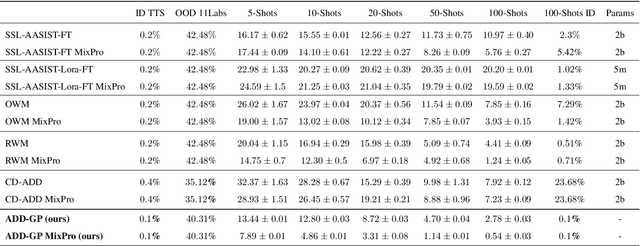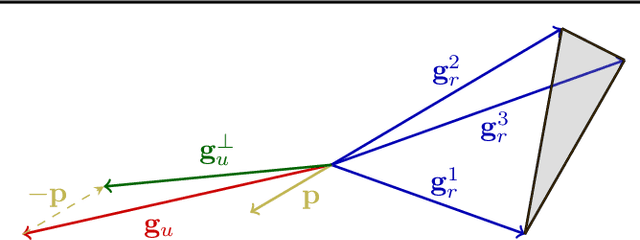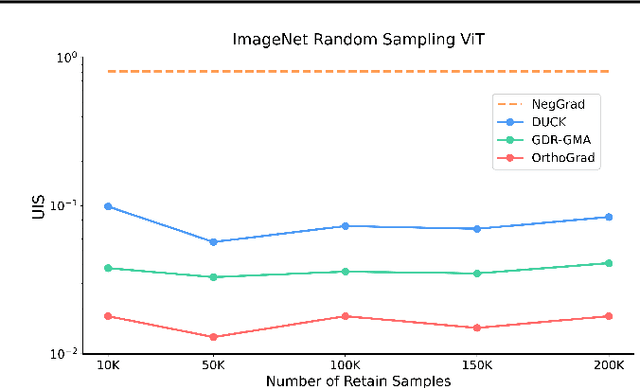Ethan Fetaya
Few-Shot Speech Deepfake Detection Adaptation with Gaussian Processes
May 29, 2025


Abstract:Recent advancements in Text-to-Speech (TTS) models, particularly in voice cloning, have intensified the demand for adaptable and efficient deepfake detection methods. As TTS systems continue to evolve, detection models must be able to efficiently adapt to previously unseen generation models with minimal data. This paper introduces ADD-GP, a few-shot adaptive framework based on a Gaussian Process (GP) classifier for Audio Deepfake Detection (ADD). We show how the combination of a powerful deep embedding model with the Gaussian processes flexibility can achieve strong performance and adaptability. Additionally, we show this approach can also be used for personalized detection, with greater robustness to new TTS models and one-shot adaptability. To support our evaluation, a benchmark dataset is constructed for this task using new state-of-the-art voice cloning models.
Go Beyond Your Means: Unlearning with Per-Sample Gradient Orthogonalization
Mar 04, 2025



Abstract:Machine unlearning aims to remove the influence of problematic training data after a model has been trained. The primary challenge in machine unlearning is ensuring that the process effectively removes specified data without compromising the model's overall performance on the remaining dataset. Many existing machine unlearning methods address this challenge by carefully balancing gradient ascent on the unlearn data with the gradient descent on a retain set representing the training data. Here, we propose OrthoGrad, a novel approach that mitigates interference between the unlearn set and the retain set rather than competing ascent and descent processes. Our method projects the gradient of the unlearn set onto the subspace orthogonal to all gradients in the retain batch, effectively avoiding any gradient interference. We demonstrate the effectiveness of OrthoGrad on multiple machine unlearning benchmarks, including automatic speech recognition, outperforming competing methods.
Adversarial Robustness in Parameter-Space Classifiers
Feb 27, 2025Abstract:Implicit Neural Representations (INRs) have been recently garnering increasing interest in various research fields, mainly due to their ability to represent large, complex data in a compact and continuous manner. Past work further showed that numerous popular downstream tasks can be performed directly in the INR parameter-space. Doing so can substantially reduce the computational resources required to process the represented data in their native domain. A major difficulty in using modern machine-learning approaches, is their high susceptibility to adversarial attacks, which have been shown to greatly limit the reliability and applicability of such methods in a wide range of settings. In this work, we show that parameter-space models trained for classification are inherently robust to adversarial attacks -- without the need of any robust training. To support our claims, we develop a novel suite of adversarial attacks targeting parameter-space classifiers, and furthermore analyze practical considerations of attacking parameter-space classifiers. Code for reproducing all experiments and implementation of all proposed methods will be released upon publication.
Inverse Problem Sampling in Latent Space Using Sequential Monte Carlo
Feb 09, 2025



Abstract:In image processing, solving inverse problems is the task of finding plausible reconstructions of an image that was corrupted by some (usually known) degradation model. Commonly, this process is done using a generative image model that can guide the reconstruction towards solutions that appear natural. The success of diffusion models over the last few years has made them a leading candidate for this task. However, the sequential nature of diffusion models makes this conditional sampling process challenging. Furthermore, since diffusion models are often defined in the latent space of an autoencoder, the encoder-decoder transformations introduce additional difficulties. Here, we suggest a novel sampling method based on sequential Monte Carlo (SMC) in the latent space of diffusion models. We use the forward process of the diffusion model to add additional auxiliary observations and then perform an SMC sampling as part of the backward process. Empirical evaluations on ImageNet and FFHQ show the benefits of our approach over competing methods on various inverse problem tasks.
Multi Task Inverse Reinforcement Learning for Common Sense Reward
Feb 17, 2024Abstract:One of the challenges in applying reinforcement learning in a complex real-world environment lies in providing the agent with a sufficiently detailed reward function. Any misalignment between the reward and the desired behavior can result in unwanted outcomes. This may lead to issues like "reward hacking" where the agent maximizes rewards by unintended behavior. In this work, we propose to disentangle the reward into two distinct parts. A simple task-specific reward, outlining the particulars of the task at hand, and an unknown common-sense reward, indicating the expected behavior of the agent within the environment. We then explore how this common-sense reward can be learned from expert demonstrations. We first show that inverse reinforcement learning, even when it succeeds in training an agent, does not learn a useful reward function. That is, training a new agent with the learned reward does not impair the desired behaviors. We then demonstrate that this problem can be solved by training simultaneously on multiple tasks. That is, multi-task inverse reinforcement learning can be applied to learn a useful reward function.
Improved Generalization of Weight Space Networks via Augmentations
Feb 06, 2024Abstract:Learning in deep weight spaces (DWS), where neural networks process the weights of other neural networks, is an emerging research direction, with applications to 2D and 3D neural fields (INRs, NeRFs), as well as making inferences about other types of neural networks. Unfortunately, weight space models tend to suffer from substantial overfitting. We empirically analyze the reasons for this overfitting and find that a key reason is the lack of diversity in DWS datasets. While a given object can be represented by many different weight configurations, typical INR training sets fail to capture variability across INRs that represent the same object. To address this, we explore strategies for data augmentation in weight spaces and propose a MixUp method adapted for weight spaces. We demonstrate the effectiveness of these methods in two setups. In classification, they improve performance similarly to having up to 10 times more data. In self-supervised contrastive learning, they yield substantial 5-10% gains in downstream classification.
Bayesian Uncertainty for Gradient Aggregation in Multi-Task Learning
Feb 06, 2024



Abstract:As machine learning becomes more prominent there is a growing demand to perform several inference tasks in parallel. Running a dedicated model for each task is computationally expensive and therefore there is a great interest in multi-task learning (MTL). MTL aims at learning a single model that solves several tasks efficiently. Optimizing MTL models is often achieved by computing a single gradient per task and aggregating them for obtaining a combined update direction. However, these approaches do not consider an important aspect, the sensitivity in the gradient dimensions. Here, we introduce a novel gradient aggregation approach using Bayesian inference. We place a probability distribution over the task-specific parameters, which in turn induce a distribution over the gradients of the tasks. This additional valuable information allows us to quantify the uncertainty in each of the gradients dimensions, which can then be factored in when aggregating them. We empirically demonstrate the benefits of our approach in a variety of datasets, achieving state-of-the-art performance.
Data Augmentations in Deep Weight Spaces
Nov 15, 2023Abstract:Learning in weight spaces, where neural networks process the weights of other deep neural networks, has emerged as a promising research direction with applications in various fields, from analyzing and editing neural fields and implicit neural representations, to network pruning and quantization. Recent works designed architectures for effective learning in that space, which takes into account its unique, permutation-equivariant, structure. Unfortunately, so far these architectures suffer from severe overfitting and were shown to benefit from large datasets. This poses a significant challenge because generating data for this learning setup is laborious and time-consuming since each data sample is a full set of network weights that has to be trained. In this paper, we address this difficulty by investigating data augmentations for weight spaces, a set of techniques that enable generating new data examples on the fly without having to train additional input weight space elements. We first review several recently proposed data augmentation schemes %that were proposed recently and divide them into categories. We then introduce a novel augmentation scheme based on the Mixup method. We evaluate the performance of these techniques on existing benchmarks as well as new benchmarks we generate, which can be valuable for future studies.
Equivariant Deep Weight Space Alignment
Oct 20, 2023



Abstract:Permutation symmetries of deep networks make simple operations like model averaging and similarity estimation challenging. In many cases, aligning the weights of the networks, i.e., finding optimal permutations between their weights, is necessary. More generally, weight alignment is essential for a wide range of applications, from model merging, through exploring the optimization landscape of deep neural networks, to defining meaningful distance functions between neural networks. Unfortunately, weight alignment is an NP-hard problem. Prior research has mainly focused on solving relaxed versions of the alignment problem, leading to either time-consuming methods or sub-optimal solutions. To accelerate the alignment process and improve its quality, we propose a novel framework aimed at learning to solve the weight alignment problem, which we name Deep-Align. To that end, we first demonstrate that weight alignment adheres to two fundamental symmetries and then, propose a deep architecture that respects these symmetries. Notably, our framework does not require any labeled data. We provide a theoretical analysis of our approach and evaluate Deep-Align on several types of network architectures and learning setups. Our experimental results indicate that a feed-forward pass with Deep-Align produces better or equivalent alignments compared to those produced by current optimization algorithms. Additionally, our alignments can be used as an initialization for other methods to gain even better solutions with a significant speedup in convergence.
Object-Centric Open-Vocabulary Image-Retrieval with Aggregated Features
Sep 26, 2023Abstract:The task of open-vocabulary object-centric image retrieval involves the retrieval of images containing a specified object of interest, delineated by an open-set text query. As working on large image datasets becomes standard, solving this task efficiently has gained significant practical importance. Applications include targeted performance analysis of retrieved images using ad-hoc queries and hard example mining during training. Recent advancements in contrastive-based open vocabulary systems have yielded remarkable breakthroughs, facilitating large-scale open vocabulary image retrieval. However, these approaches use a single global embedding per image, thereby constraining the system's ability to retrieve images containing relatively small object instances. Alternatively, incorporating local embeddings from detection pipelines faces scalability challenges, making it unsuitable for retrieval from large databases. In this work, we present a simple yet effective approach to object-centric open-vocabulary image retrieval. Our approach aggregates dense embeddings extracted from CLIP into a compact representation, essentially combining the scalability of image retrieval pipelines with the object identification capabilities of dense detection methods. We show the effectiveness of our scheme to the task by achieving significantly better results than global feature approaches on three datasets, increasing accuracy by up to 15 mAP points. We further integrate our scheme into a large scale retrieval framework and demonstrate our method's advantages in terms of scalability and interpretability.
 Add to Chrome
Add to Chrome Add to Firefox
Add to Firefox Add to Edge
Add to Edge